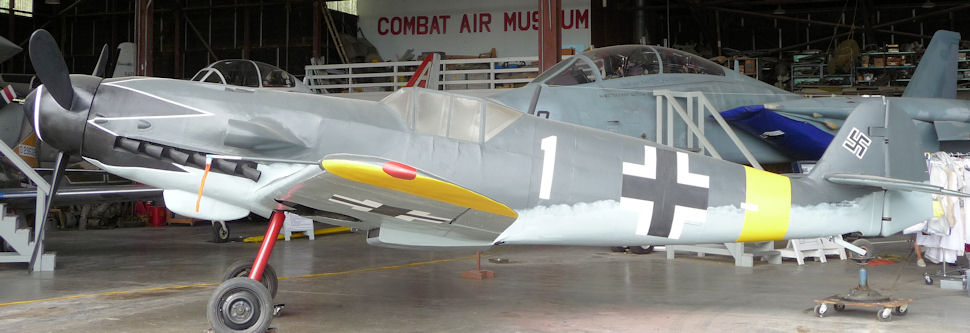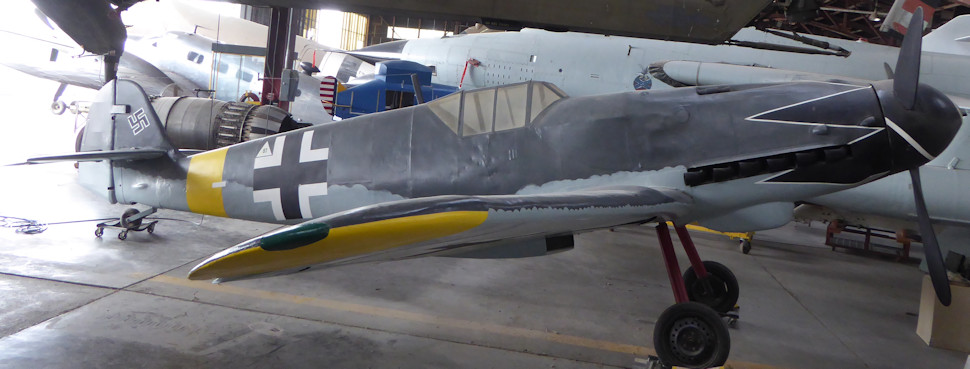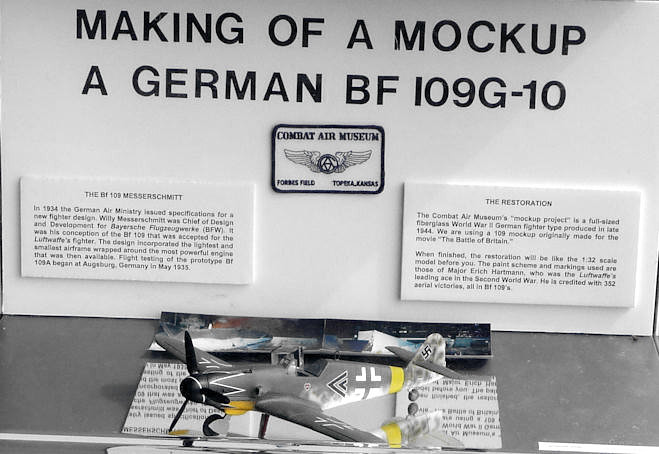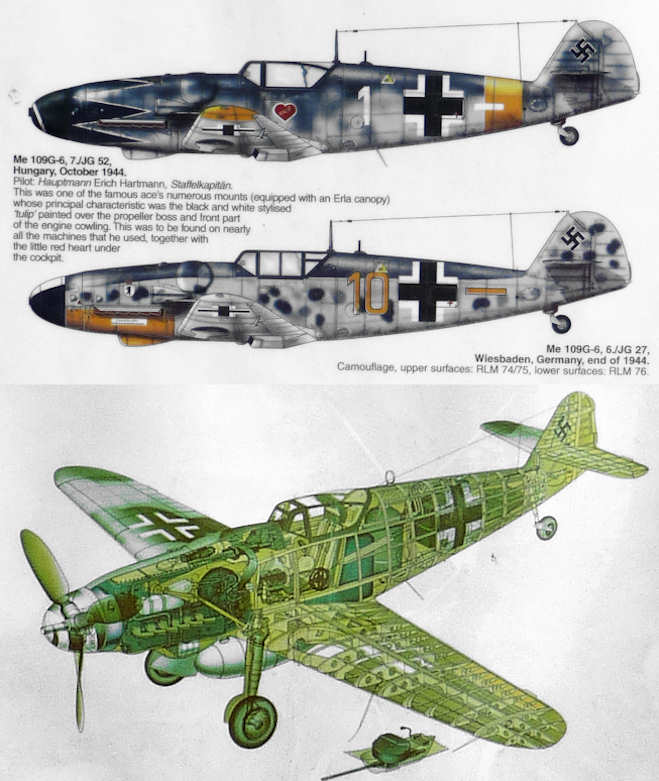Development of Willi
Messerschmitt's famous Bf 109 began in 1933, when the Reichsluftministerium
(RiM) issued a requirement for a new monoplane
fighter. The prototype B1 109V-1 flew for the first time in September
1935, powered by a 695hp Rolls-Royce Kestrel engine, as the 610hp Junkers
Jumo 210A which was intended for it was not yet available. The Bf 109V-7,
armed with two machine guns and a single MG FF (0.79-in (20-mm) Oerlikon
cannon), became the prototype for the first series production model,
the Bf 109B, powered by a 610hp Jumo 210 engine. Three of the Bf 109
prototypes were evaluated in Spain in February and March 1937 and were
followed by 24 Bf 109B-2s, which immediate- ly proved superior to any
other fighter engaged in the civil war. It was the use of the Bf 109
in Spain that enabled the Luftwaffe to develop the fighter tactics
that would enable it to wreak havoc among its opponents in the early
years
of World War II.
By
the time that conflict began in September 1939,1,060 Bf 109s of various
subspecies
were in service with the Luftwaffe's fighter units.
These
included the Bf 109C and Bf 109D, which were already being replaced
by the Bf 109£ series; this model was to be the mainstay of
the Luftwaffe's fighter units throughout 1940. The series extended
to the £-9,
including models built as fighters, fighter-bombers, and reconnaissance
aircraft. Ten Bf 109£s were converted for operations from Germany's
planned aircraft carrier, the Graf Zeppelin, under the designation
Bf 109T. The best of all Bf 109 variants, the Bf 109F, began to reach
Luftwaffe
units in France in May 1941 and was superior in most respects to
the principal RAF fighter of the time, the Spitfire Mk V. The Bf
109F differed
from the Bf 109£ in having a generally cleaned- up airframe,
redesigned engine cowling, wing, radiators, and tail assembly. It
was succeeded
by the Bf 109G, which appeared late in 1942. Preproduction Bf 109G-0
aircraft retained the DB 601£ of the F series, but the first
production model, the Bf 109G-1, had the more powerful DB 605A engine.
The G-1,
G-3, and G-5 had provision for pressurized cockpits and were fitted
with the GM-1 emergency power- boost system, which was lacking in
the G-2
and G-4. Various armament combinations were employed, and later aircraft
were fitted with wooden tail units. The fastest G model, the Bf 109G-10,
without wing armament and with MW 50 power- boost equipment, reached
a maximum speed of 425mph (687km/h) at 24,278ft (7,400m), climbed
to 20,000ft (6,100m) in six minutes and had an endurance of 55 minutes.
The last operational
versions of the Bf 109 were the K -4 and K-6, which both had DB 605D
engines with MW 50 power boost. The
Bf 109K-4 had two 0.58-in (15-mm) MG 151 guns semi externally mounted
above the engine cowling and a 0.79- in (20-mm) MK 108 or
1.19-in (30-mm) Mk 103 firing through the propeller hub. The Bf
109K-6 had the
cowling-mounted MG 151s replaced by 0.50-in (12.7-mm) MG 131 machine
guns and had two 1.19-in (30-mm) MK 103 cannon in under- wing gondolas.
The last variant was the Bf 109K-14, with a DB 605L engine, but
only two examples saw service with JG 52.
The
Bf 109G was built in both Spain (as the Hispano Ha- 1109) and Czechoslovakia
(as
the Avia S-199). Some of the Czech-built: aircraft
were acquired
by Israel in 1948. Bf 109 production reached an approximate total
of 35,000 aircraft.
TECHNICAL
NOTES: |
Production Model
|
| Manufacturer: |
Bayerische Flugzeugwerke, Germany
|
| Basic Role: |
Fighter
|
| Crew: |
One
|
| Engine: |
One 1,474hp Daimler-Benz DB 6O5AM 12-cytinder inverted-Vee engine (rated
at 1,850 hp for take-off)
|
| Maximum speed: |
386mph (621 km/h) at 22,967ft (7,000 m)
|
| Cruising Speed: |
180 mph
(290 km/hr)
|
| Max. Range: |
620 miles (1,000 km)
|
| Service Ceiling: |
37,890ft
(11,550 m)
|
| Range: |
1350 – 1470 miles (2,177 – 2,371 km)
|
| Wingspan: |
32ft
6in (9.92 m)
|
| Length: |
29ft (8.85 m)
|
| Height: |
8ft 2in (2.50 m)
|
| Weight (empty): |
5,180lb (2,350kg)
|
| Weight (loaded): |
7,496lb
(3,400 kg)
|
| Armament: |
One 0.79-in (20 mm) or 1.19 in (30 mm) fixed forward-firing cannon
in an engine installation,
and two 0.50 in (12.7 mm) fixed forward-firing machine guns in the upper part
of the forward fuselage; external bomb load of 551 1bs (250kg) |











